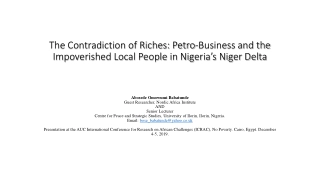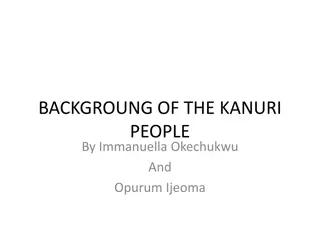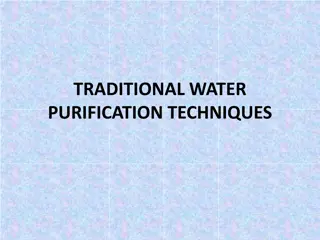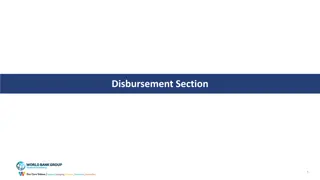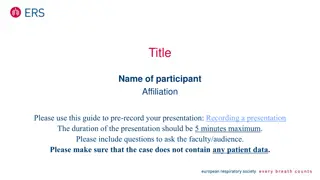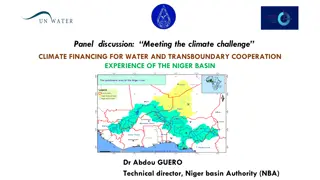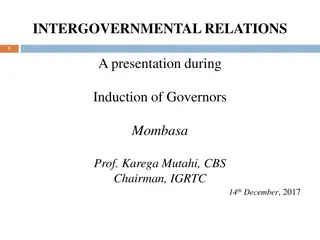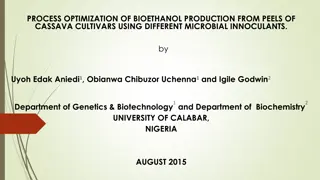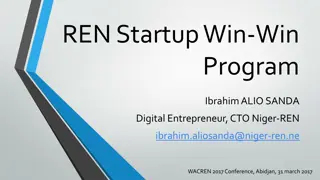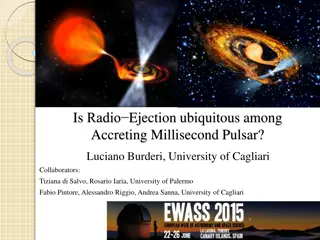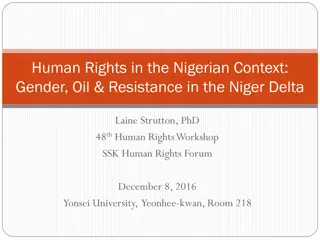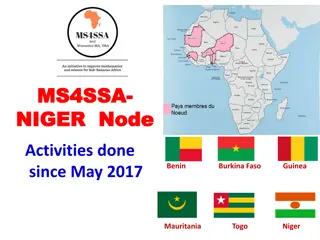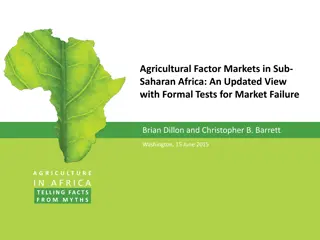
Niger State Economic Overview and IGR Administration
Discover the economic landscape of Niger State, including its vast land area, population, GDP, revenue composition, and institutional arrangements for Internal Revenue Generation (IGR). Learn about the legal framework, major revenue sources, and performance trends shaping the state's financial outlook.
Download Presentation

Please find below an Image/Link to download the presentation.
The content on the website is provided AS IS for your information and personal use only. It may not be sold, licensed, or shared on other websites without obtaining consent from the author. If you encounter any issues during the download, it is possible that the publisher has removed the file from their server.
You are allowed to download the files provided on this website for personal or commercial use, subject to the condition that they are used lawfully. All files are the property of their respective owners.
The content on the website is provided AS IS for your information and personal use only. It may not be sold, licensed, or shared on other websites without obtaining consent from the author.
E N D
Presentation Transcript
Date NOVEMBER 16, 2015
Niger State Context PART ONE
Niger States Economic Context The Largest State in land area (76,363 square Kilometers) located in the North Central part of Nigeria with population of 5.37m (2015 Estimate with 3.4% growth rate) Endowed with agricultural and mineral resources; has looming manufacturing, commercial and financial advantages. Estimated GDP of N1,080,854.95 in 2011. The Power State: two major hydroelectric power stations-Kainjiand Shiroro Rich in Culture & Tourism
100,000,000,000.00 Niger State - Revenue Composition Niger State Revenue 90,000,000,000.00 80,000,000,000.00 Main Sources of Revenue in Niger State 70,000,000,000.00 60,000,000,000.00 Total State Revenue Federal Transfer (94.42%) 50,000,000,000.00 Federal Allocations IGR 40,000,000,000.00 30,000,000,000.00 IGR (5.58%) 20,000,000,000.00 10,000,000,000.00 -
IGR Administration 1. Legal framework for IGR in Niger sate. Federal Laws: Taxes and levies-Approved list for collection Act 1998 Stamp Duties Act 2004 Personal Income Tax Act(2004 and 2011 amendments) Capital Gains Tax Act State Laws: Niger State Revenue Collection and Administration Law 2013 Niger State Geographical Information System Agency law, 2013 Niger State Transport/Road Traffic Regulations 2015 Niger State Environmental Protection Agency Law 2011 as amended
IGR Administration (Continued) 2. Institutional Arrangements for IGR Collection Niger Sate Internal Revenue Service Ministries Departments & Agencies (MDAs) Ministry of Works Ministry of Health Ministry of Livestock Ministry of Education (Private Schools Board) Parastatals (Water, Sanitation, etc) Niger State Transport Authority (NSTA), Niger State Environmental Protection Agency ( NISEPA), Niger State Rural Water and Sanitation Agency, Niger Sate Water Board, Niger Sate Universal Basic Education Board(NSUBEB), Niger State Geographic Information System Agency, Niger State Urban Development Board, Niger State Environmental Protection Agency.
Innovative Measures by the State The overall administrative capacity of NGSIRS has improved over the years based on the following: New management tools developed Operational strategies adopted Measures taken Cash point office introduced with POS machines in tracking revenue collection. Sustained taxpayer enumeration towards building a taxpayer database. Linking assessment to taxpayers, payments and reconciliations
Innovative Measures by the State (Continued) Creation of new standing committees: I. The Tax Audit and Review Committee (TARC) II. Tax Monitoring, Compliance and Enforcement Committee (TMCEC) III Technical Committee (TC) Outcomes and Results: Annual IGR increased (from N2.9 billion in 2010 to N5.1 billion in 2014) Transparency and accountability in revenue collection Centralized and consolidated assessment in one notice (P.I.T, B.P.R & D/Levy) that gives the taxpayer his/her picture of tax burden in one view
What Works? PART TWO
Case I: Achieving IGR improvements through the reform of tax administration
Reform Measures Tax administration reform measures Automation Management restructuring Creation of additional Tax Offices across the State Periodic meetings with stakeholders such as GIZ, BAG, UNDP, DFID and SPARC on improvement of IGR Partial autonomy Increased Funding Improved system and processes
Reform Measures (Continued) Office Assessment (Presumptive, Provisional and Best of Judgement Assessment (BOJ) Self Assessment Service of Assessment Notices Objections and appeals Reconciliation meeting by Tax Assessment Review Committee (TARC) Payment of Tax Enforcement of Tax Compliance
Accounting and Audit of Tax/IGR Revenue/Tax Accounting is handled by the Special Duties department of the NGSIRS. This department is different from Assessment and Collection department. The department conducts bi-weekly verification exercise of collections and reconciliations for tax and non-tax revenue. The Audit department is segmented in to sectional basis: - i. Financial Sector ii. Bank and Insurance Sector iii. Oil and Gas iv. Government organizations (Federal Government, Local Government and Private organizations) v. Educational Institutions (Private) vi. Health Sector vii. Construction companies viii. Hotels and Hospital Industries ix. Agriculture
Enforcement of Tax Compliance Reminder letters to tax defaulters Notification of Final and Conclusive Letters to the Tax Defaulters Litigation at the Court through the office of the Legal Adviser
IGR Stakeholder Engagement Public lectures organised by the NGSIRS in conjunction with GIZ, BAG etc. Town Hall meetings with Business Groups, Entrepreneurs and Associations Radio and Television Jingles Billboards Frequently Asked Questions and Answers Booklets on PITA
Challenges & Issues Challenges Militating against Optimal Revenue Generation 1. Political will by the Government. 2. Use of consultants in performance of the core functions of Internal Revenue Services. 3. Some fees and fines in the state are obsolete. 4. The challenge of Generate and Consume syndrome being operated by some MDAs. 5. The challenge of dedicated account by some MDAs. 6. Lack of Full Implementation of current Personal Income Tax amended Act 2011 under PAYE Scheme by the State Government and some Federal Establishments. 7. The challenge of Direct Labour By some MDAs and Local Government Councils on contracts that deprive the state taxes. 8. Lack of Dedicated Revenue Courts at the State level. 9. Lack of full automation process.

